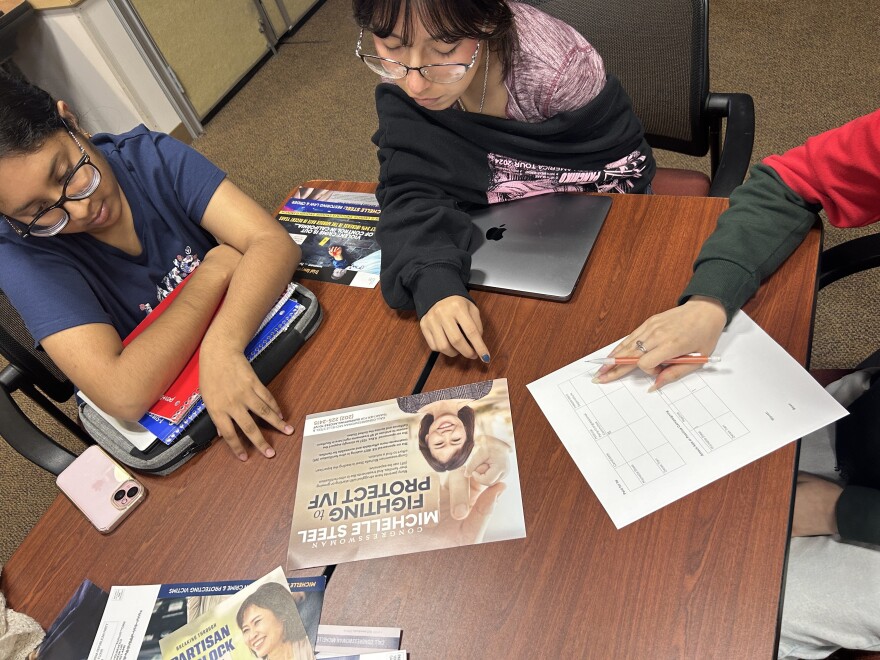With our free press under threat and federal funding for public media gone, your support matters more than ever. Help keep the LAist newsroom strong, become a monthly member or increase your support today.
How to decode those political mailers clogging up your mailbox

A political science class at Fullerton College is sorting through campaign mailers to learn how to decode attack ads and who pays for them, and to understand how candidates try to sway voters. There are some lessons for the rest of us, too.
The assignment
In Jodi Balma's political science class recently, students broke into groups with piles of mailers sent out in the 45th Congressional district, where incumbent Republican Michelle Steel is facing off against Democrat Derek Tran. Students tallied up the negative and positive ads, analyzed the colors and messaging, and noted who paid for them.
What's the point?
Balma said learning how to "diagnose" campaign ads is a skill students can take throughout their voting life.
"When you actually critically look at it in a classroom, you get a very different perspective than when it's in your mailbox," Balma said. "And so teaching that skill stays with the students forever."
A few tips about campaign mailers:
- Generally, political ads have to disclose who paid for them. California's Fair Political Practices Committee (FPPC) has a handy fact sheet that lays out the basic rules.
- If you think an ad violates the rules, you can upload a photo of it or send a link to the FPPC's enforcement division and they'll review it.
- Voting early can help slow the flood of campaign ads to your mailbox. Sophisticated campaigns tailor their mailers to people they think they can sway.
Still working your way through the ballot? Head over to LAist.com/Vote for a guide to help you fill out your ballot.
We don't do endorsements. But we do help you break down the races, measures and issues that impact you most of all.
-
Results of the 2025 count show homelessness dropped by 3.4% in the city of L.A. and by 4% countywide, according to LAHSA.
-
911 recordings obtained by LAist shed light on why and how emergency planning continues to leave people with disabilities behind.
-
Barnes City was created 100 years ago. And then it disappeared, one of L.A.'s shortest-lived municipalities. What happened to it?
-
Full Circle Thrift, a nonprofit thrift store in Altadena, reopened this week, six months after the Eaton Fire devastated the neighborhood.
-
LAist reported that documents showed Va Lecia Adams Kellum signed a contract and two amendments with Upward Bound House, a Santa Monica-based nonprofit.
-
A check from State Farm to a Los Angeles fire survivor has taken more than a week to clear so far. A bank is concerned about insufficient funds.
















